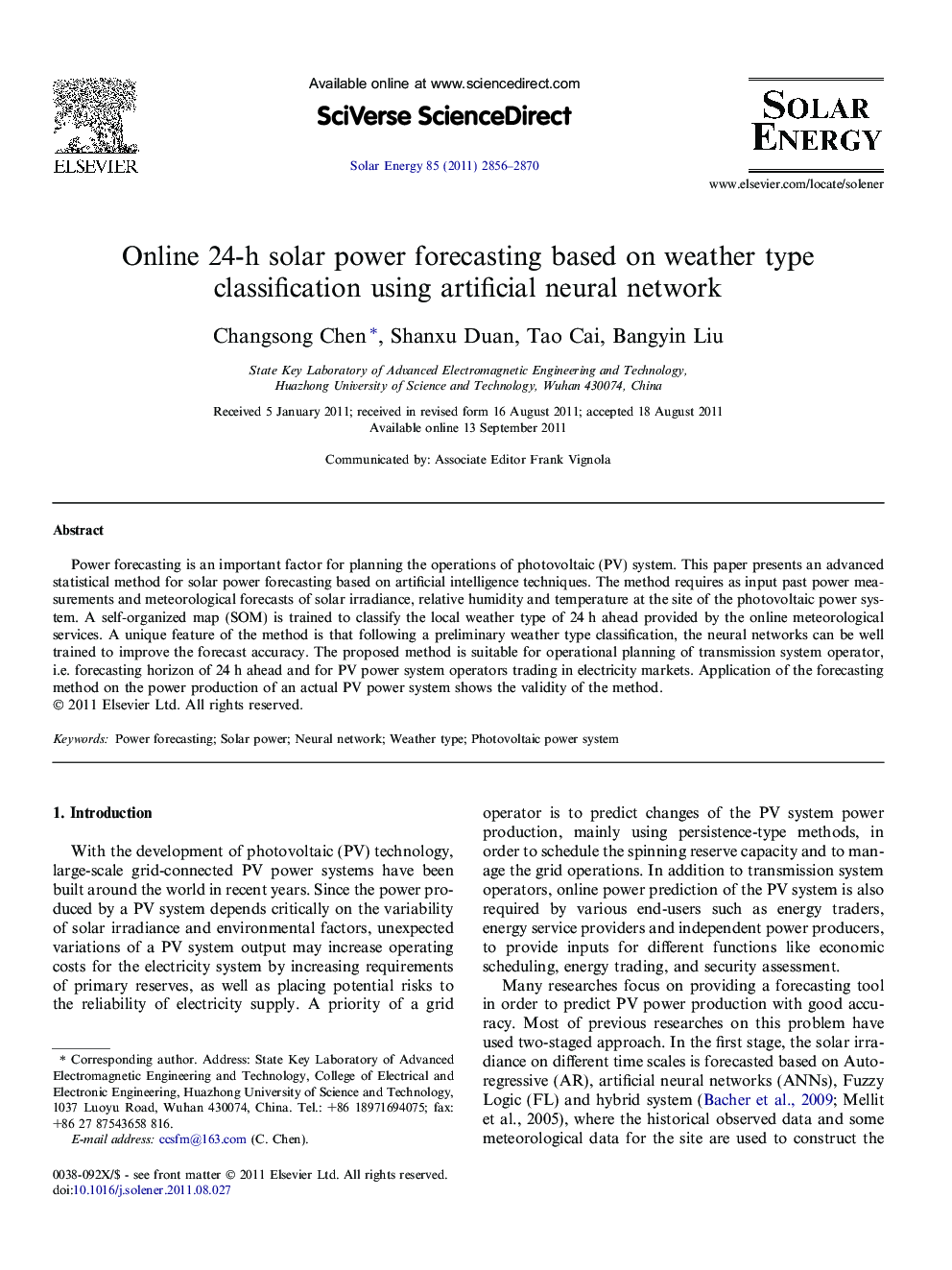| Article ID | Journal | Published Year | Pages | File Type |
|---|---|---|---|---|
| 1551145 | Solar Energy | 2011 | 15 Pages |
Power forecasting is an important factor for planning the operations of photovoltaic (PV) system. This paper presents an advanced statistical method for solar power forecasting based on artificial intelligence techniques. The method requires as input past power measurements and meteorological forecasts of solar irradiance, relative humidity and temperature at the site of the photovoltaic power system. A self-organized map (SOM) is trained to classify the local weather type of 24 h ahead provided by the online meteorological services. A unique feature of the method is that following a preliminary weather type classification, the neural networks can be well trained to improve the forecast accuracy. The proposed method is suitable for operational planning of transmission system operator, i.e. forecasting horizon of 24 h ahead and for PV power system operators trading in electricity markets. Application of the forecasting method on the power production of an actual PV power system shows the validity of the method.
► The RBFN model can forecast PV power output accurately in sunny days and cloudy days. ► The RBFN model makes a direct forecast of the power output of the PV system. ► A self-organized map is applied to classify the local weather type. ► The main factors are identified to forecast the power output of the PV system.
